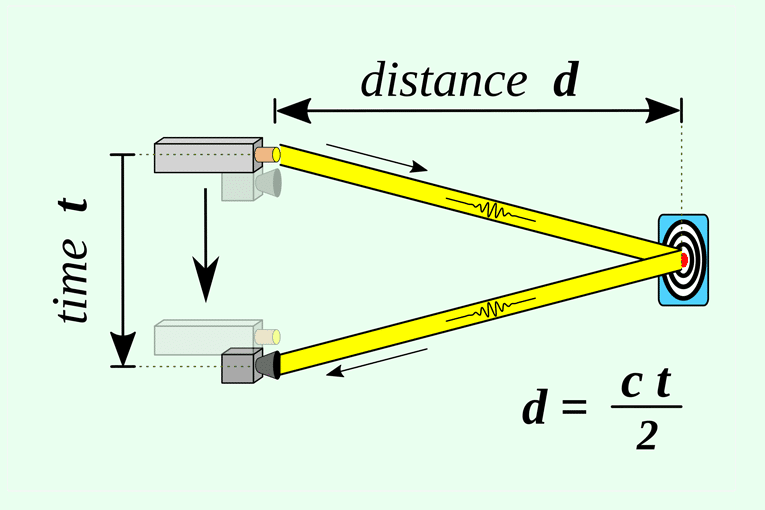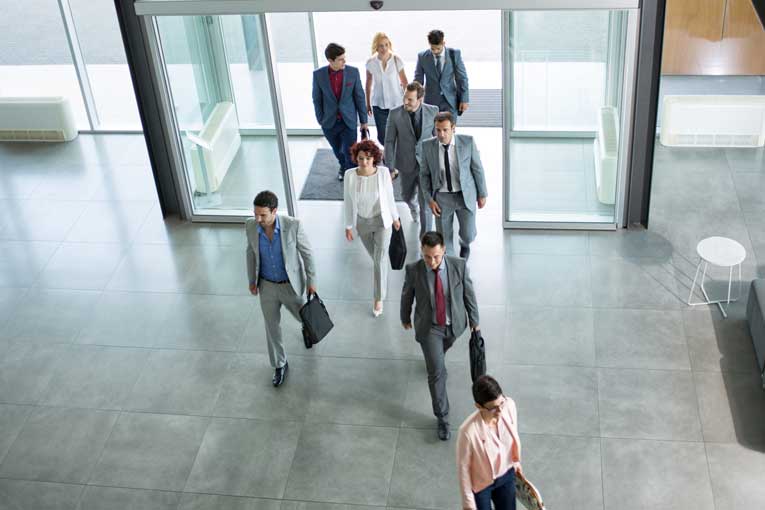The Rise of Occupancy Management


James Thorpe
Share this content
OPTEX reveals how real time solutions are helping to meet the challenges of tomorrow’s occupancy management challenges.
People counting is currently back in the headlines.
What was once the sole reserve of the retail industry to measure footfall and monitor customer behaviours has steadily evolved into a tool that can now help control social distancing.
More than this, some systems are now so sophisticated that they can integrate with building management systems to monitor occupancy levels virtually in real time.
They can determine how many are in the building and where.
This data can subsequently be analysed to determine future environmental strategies and not wasting energy by lighting rooms when nobody’s there, or heating offices when everyone’s gone home.
Article Chapters
ToggleSteady Evolution
The evolution of people counting has been steady rather than spectacular and the concept has been slow to get off the ground.
Its adoption has perhaps not been helped by a certain amount of confusion as regards the technologies available.
There are at least half a dozen different methods currently being deployed, of different capabilities and performance and with specialist providers in every category.
At one end of the scale, for example, are infrared people counters – usually beams – which work well up to a point but vary significantly in their performance and have limited use from any analytical standpoint.
They are the technological equivalent of a man with a ‘clicker’, counting each time the beam is broken.
However, when people enter simultaneously, they will be seen as one count.
They were among the first people counting technologies to be tried and adopted and in certain scenarios, where advanced accuracy is not required, they can still fulfil a useful role.
At the other end are thermal people counters which, as the name suggests, use thermal imaging technology to record the difference between the body temperature of an individual and the environment around them.
Heat sensing cameras (not dissimilar to those being trialled to detect potential COVID-19 carriers at airports) detect when a person has entered a room/building with a good degree of accuracy and reliability, even when the traffic volume is high.
Unlike standard cameras they do not rely on light (even IR light) to be able to ‘see’ and so they are well suited to environments where lighting is an issue, or people are likely to visit after dark.
Then there are stereo and mono people counters.
Both using similar techniques but with varying degrees of accuracy based on the number of camera lenses deployed and the analytics and algorithms they use.
In both cases the devices are usually fixed in the ceiling directly above the area to be monitored.
Counting ‘heads’ rather than counting ‘bodies’ generally affords greater accuracy and the chances of ‘missing’ a body are greatly reduced.
The entry/exit of individuals can be captured in real time (or as real time as possible).
Well suited for indoor environments where the lighting is good, some mono or stereo sensors can consistently achieve accuracy of 98% and more.
Time of Flight & CCTV Cameras

‘Time of Flight’ is another phrase that has recently entered the security professional’s vocabulary and again offer a performance not dissimilar to a stereo counter or the best mono counters.
Time of Flight sensors are installed directly above the scene to be monitored and work by sending a signal to the object below and recording the reflection of infrared which bounces back to the sensor.
The advantage to these systems is that it allows a greater depth of vision and movement to be captured than, for example, thermal solutions and can also operate in poor light or even total darkness.
Integration, however, tends to be a challenge.
Time of Flight systems are certainly a firm favourite with many but are often expensive.
Some automatic door manufacturers offer this technology and embed the footfall software directly into the door sensor, to count each time a person goes through the door.
Although never designed with people counting in mind, it is not surprising that various camera manufacturers have recently jumped on the bandwagon to position CCTV technology as a viable proposition.
And to an extent, their claim is valid.
Ceiling-mounted cameras are more ‘traditionally’ installed for security purposes and given that they already exist in virtually every retail store or commercial premises, there’s a strong argument to extend their remit to other uses, rather than invest in additional technology beyond a simple software upgrade.
Cameras, however, still struggle in low lighting environments and what might look like a good idea on paper, may not transcend into a good idea in practice.
Detecting people at an angle, rather than from above, also presents issues in terms of delivering an accurate count and consistency is a constant challenge.
Latest Thinking
In the current post-covid era, it’s crucial to provide live monitoring of people flow.
This requires not only a real time counting system but also a real time data count transmission to the software.
The IoT-proven QTT protocol (Message Queuing Telemetry Protocol) enables this immediate update.
Thanks to the option of being able to embed MQTT protocol into OPTEX’s Akribos VC-1020 people counting system, new social distancing solutions have been developed.
Easy Count from Vaelsys and Xenoview from Xenometric are tailored to manage the flow of people inside retail outlets as they steadily re-open, managing people flow for shops.
The occupancy threshold will be entered in the system and the people counter will constantly update the status, counting people entering and leaving the premises.
A simple and efficient traffic light dashboard indicates when and how many people can enter and when they should wait.
Both solutions, when using the Akribos sensor, can achieve an accuracy of above 98%.
They can also manage I/O modules which can operate a physical traffic light, an audio system to issue a warning if the premises are getting too full and can even operate doors if it is deemed necessary to close the entrance door when the threshold has been reached.
Beside retailers, many employers have to comply with local governmental rules and create a safe environment for employees to return to work.
Technology is available that can restrict the number of employees in common areas such as waiting rooms, meeting rooms, office lobbies, restrooms etc to help facilitate stricter cleaning procedures.
The Social Distancing Room Management solution by IAconnects, for example, constantly monitors the common areas described above and displays the appropriate instruction.
It might, for example, state ‘do not enter’, ‘cleaning required,’ or ‘free to go,’ or any other such status that the customer defines.
The solution uses the OPTEX VC-1020 people counting sensor that can communicate with any Building Management System (BMS) and is capable of accurately monitoring occupancy levels.
Occupancy Level for Efficient Building & Business Management

While monitoring occupancy levels provides an immediate benefit to help businesses reopening safely, it also provides a long-term operational benefit.
Retailers with accurate footfall information have much clearer visibility on the flow of visitors, enabling them to plan their staff numbers accordingly and improve their productivity.
Any investment in an occupancy level monitoring system today will help retailers rebuild their business, in an efficient way, for the future.
As for other companies and organisations, they have a key responsibility to reduce their carbon footprint.
An occupancy level monitoring solution integrated with the Building Management System is a good way to achieve this goal.
By managing the air conditioning, heating, electricity and appliances according to the number of people present in the building, companies can realise greater energy savings.
A technology investment to help create a safe environment today can lead to a more sustainable building management tomorrow.
Making the Right Choice
So what should the customer/installer consider when choosing a people counting system?
Accuracy is, of course, one of the key drivers.
In certain scenarios, counting 95 out of every 100 people who enter a building or indoor arena may be sufficient.
For others, the thought of five people being missed when access is being strictly controlled – for example in a museum housing a priceless treasure – may be an anathema and potentially a safety issue.
Remember, however, that no system is ever 100% reliable and even with the most sophisticated technologies, some bodies will be missed and certain +/- tolerances will need to be factored in.
Identification is another driver.
The problem with CCTV-based systems is the risk of falling foul of various local privacy laws.
Systems that ‘look’ from the top down, however, tend to be more accurate – but do not run into the same difficulties in terms of identification.
Integration is another consideration, especially given the current challenges around social distancing.
The ability for a system to integrate seamlessly with an audio or traffic light system, for example, to indicate when an individual can enter/leave is extremely useful.
So too is the ability to integrate with access control technologies to close a door once an individual has left, or to prevent tailgating, is also of significant benefit.
Cost is also a factor.
Often it is a trade-off between one device doing many things (as in a camera system) or a single dedicated device for a single purpose.
Then it all comes down to choice.
Two further considerations are installation and aesthetics.
Most of the people counting technologies are comparatively easy to install.
But when systems are being used for dual purposes (especially cameras), then the installer is in something of a quandary: either the purpose is security or it is people counting, but it is very difficult to site a camera so that it can do both.
A compromise has to be reached, but few businesses are comfortable with compromising on security.
Aesthetics is also a challenge.
Beams, cameras etc are clear and visible devices, but may not be desirable in certain environments.
Sometimes a more covert device may be preferred.
This article was published in the July 2020 edition of International Security Journal. Pick up your FREE digital copy on the link here



